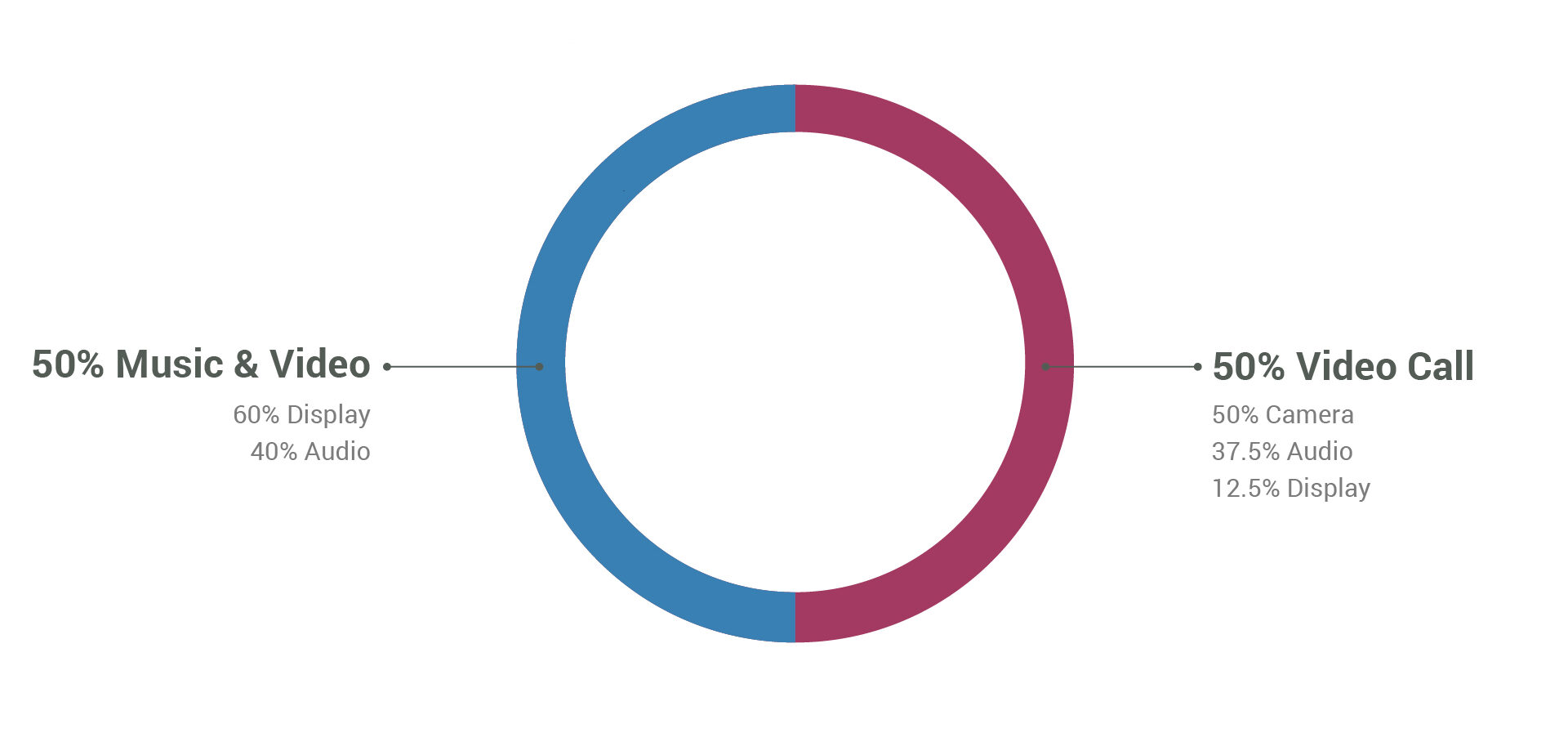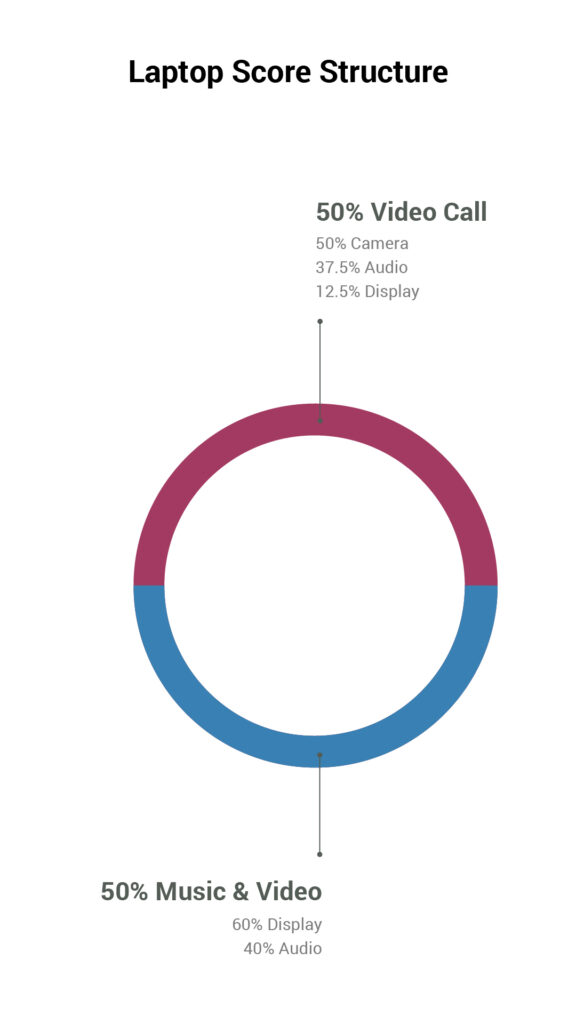Video Call 50%
The video call portion of the score evaluates professional calls in an office or meeting room environment and personal calls in a home environment. Three aspects of the video call are put to the test, related to camera, display and audio.
What is tested :
Video capture image quality
Face exposure evaluation is the main aspect assessing the ability of the built-in camera to clearly render human faces during a video call (within static as well as dynamic conditions during changing lighting environments.)
Other intrinsic image quality attributes are also evaluated :
Color
Does the camera reproduce color accurately? A particular focus is on the skin-tone rendering of the subject. Various skin-tone types are evaluated.
Texture
Does the camera preserve small and fine details in the image, particularly on the subject’s facial features, such as visible freckles or a beard, and the background?
Noise
How much noise is present in the video, particularly in scarce lighting conditions, where the amount of noise can rapidly increase?
Artifacts
Are there any undesirable and unnatural effects appearing on the image, such as distortion ?
Audio Capture, Playback and Duplex
Voice intelligibility, in capture and playback, is one of the main aspects that we evaluate in the audio experience of video calls. We assess whether the voices in the call from either one person or several people are clearly captured by the laptop’s microphones and then clearly played back via the laptop’s speakers.
Noise reduction in capture is another important aspect that is evaluated to see whether the subject’s voice has been isolated and whether background noise has been removed.
Other intrinsic audio quality attributes are evaluated for both capture and playback.
Timbre
Looks for good midrange and treble rendition to ensure faithful rendering of voice timbre.
Dynamics
Looks for a good signal-to-noise ratio in the capture part, as well as sharp voice plosives in playback and capture.
Spatial
Looks for good perceived distance and localizability, which contributes to good intelligibility when multiple people are on the call.
Volume
Evaluates the device’s capability to capture and play sound at a satisfying volume.
Artifacts
Evaluates whether capture, duplex, and playback are free of artifacts, such as gating or voice distortions, which would impair the intelligibility of speech.
We also evaluate a feature specific to video calls: full duplex/double-talk capabilities. This is linked to the laptop’s ability to handle bi-directional audio signals, such as when two people speak at the same time during a video call.
Display rendering quality
Screen readability is one of the main aspects that we evaluate in the display experience of video calls. We assess the ease and comfort of viewing the displayed images during a video call indoors, with the focus on:
-
- Screen brightness and contrast, which measures the screen’s minimum and maximum brightness levels in an indoor environment;
- Reflectance, which measures how much of the surrounding light is reflected by the device, therefore affecting the viewing experience.
SDR video performance (because video calls are in SDR):
-
- We evaluate the display’s brightness, contrast, as well as the tone mapping, which assesses the rendering of the details from dark tones to highlights, which should be as close as possible to the original subject.
Test scenarios:
-
- Two types of calls: Professional calls in an office or meeting rooms and personal calls in a home environment
- Number of people on the call: One-on-one calls and small group calls
- Various indoor lighting conditions
- Various voice and background noise conditions



